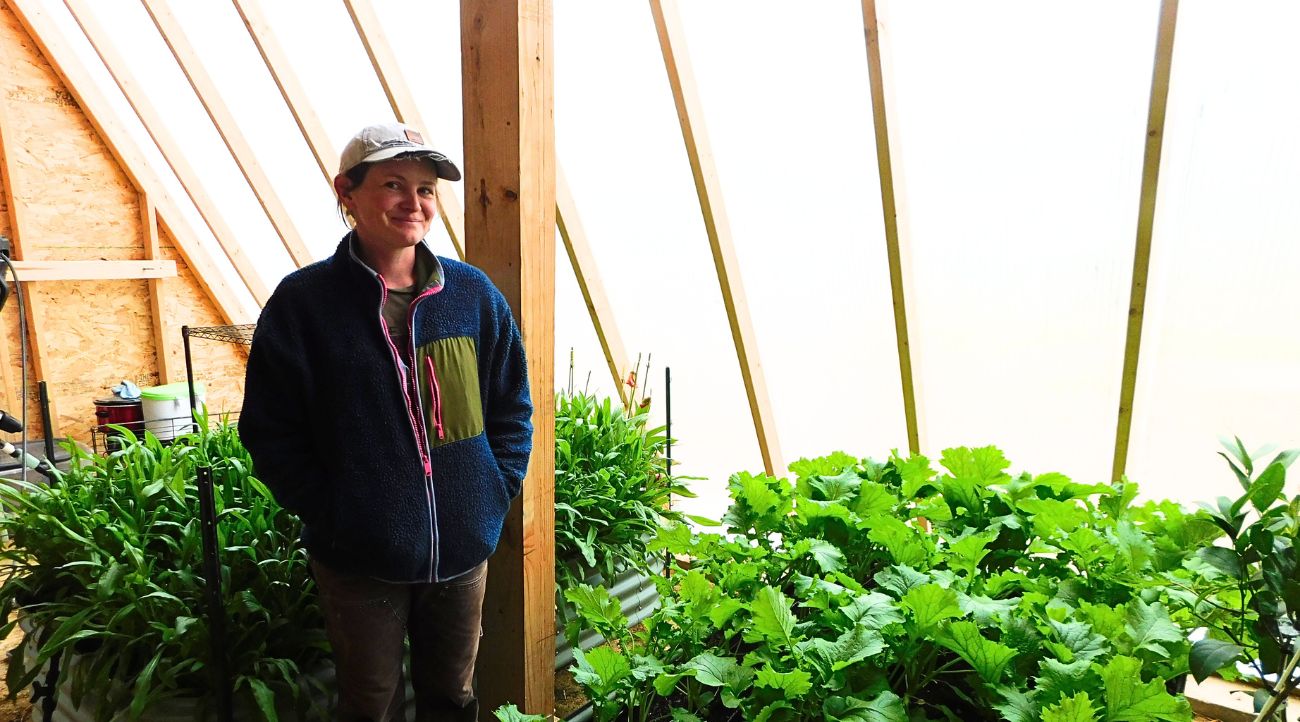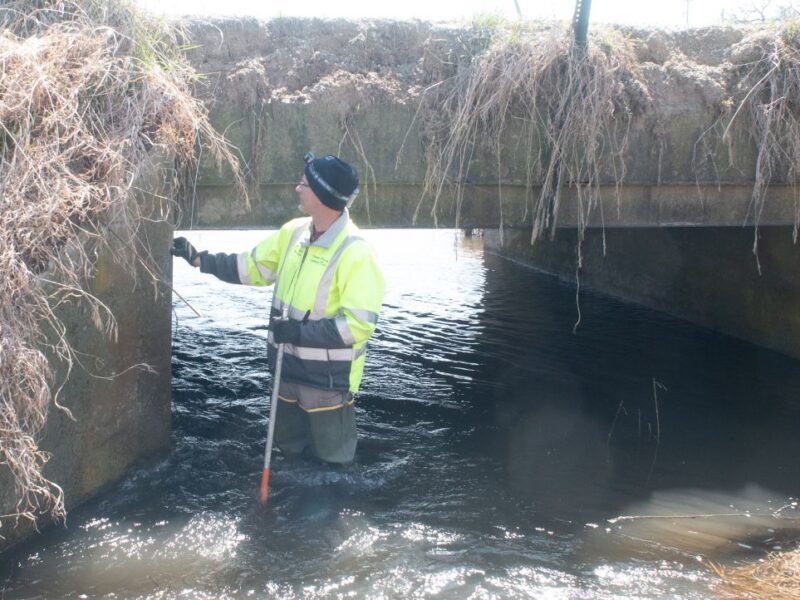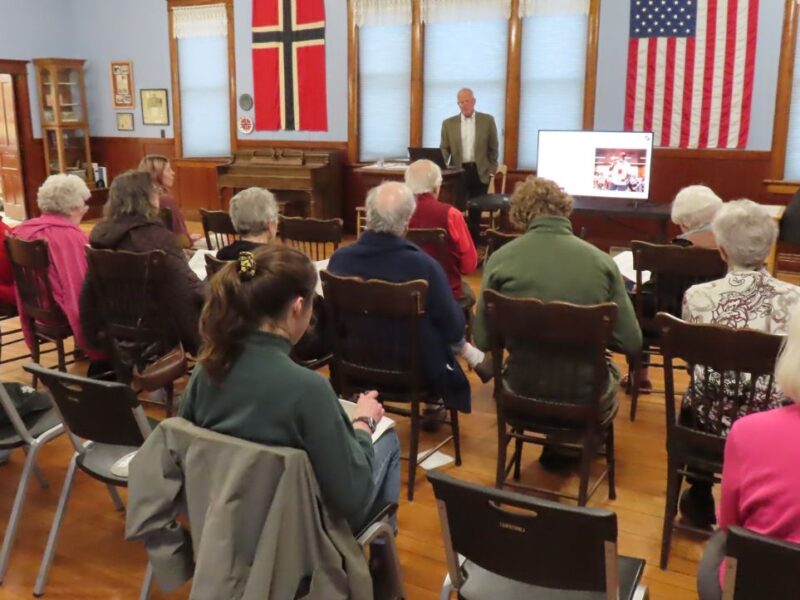Co-owner Carrie Calvo inside the Deep Winter Greenhouse (DWG) at Owl Bluff Farm in Houston County, Minn. (Photo by Rose Korabek)
Owl Bluff Farm Expands Its Organic Produce Operation
‘Deep Winter Greenhouse’ adds to growing season
BLACK HAMMER TOWNSHIP, HOUSTON COUNTY – Owl Bluff Farm is growing in its seventh year of operation, and not just its produce. With the help of several recent grants, it is adding the infrastructure needed to increase the size of its organic operation.
The small, certified organic farm is in Black Hammer Township, southwest of Houston, Minn. “We grow everything we sell on less than one acre, including crops in three high tunnels and a Deep Winter Greenhouse designed by, and built in partnership with, the University of Minnesota,” said Carrie Calvo, co-owner of Owl Bluff Farm.
“The community has been very supportive,” she added. “Our fresh, flavorful produce is available through local co-ops, grocery stores, restaurants, farmers markets and [coming soon] directly to customers via our online farm store.”
In early May, the farm starts its online Farm Store sales for home delivery or pickup and two locations in Rochester, Minn.
A Deep Winter Greenhouse comes to Houston County
“Ten years ago, fewer than a handful of deep winter greenhouses (DWG) were operating in Minnesota, and little was known about their effectiveness for sustainable food production in a northern climate,” said Constance Carlson, assistant statewide director for the University of Minnesota Extension Regional Sustainable Development Partnerships (RSDP).
“Farmers wanted to know if this technology could reduce the energy burden of growing fresh food during Minnesota winters while also providing new market opportunities,” she said. “Communities wanted to know if this technology might provide a sustainable source of healthy, fresh and local food. To answer these questions, RSDP launched a research collaboration with the College of Sustainable Building Design with seed funding from the University of Minnesota Institute on the Environment.”
After the first round was tested around the state, RSDP tweaked its design and continued its research. They announced more grants last spring, and Owl Bluff Farm was one of five recipients in Greater Minnesota chosen to partner in the development of a farm-scale deep winter greenhouse for research, outreach and educational activities over the next three years.
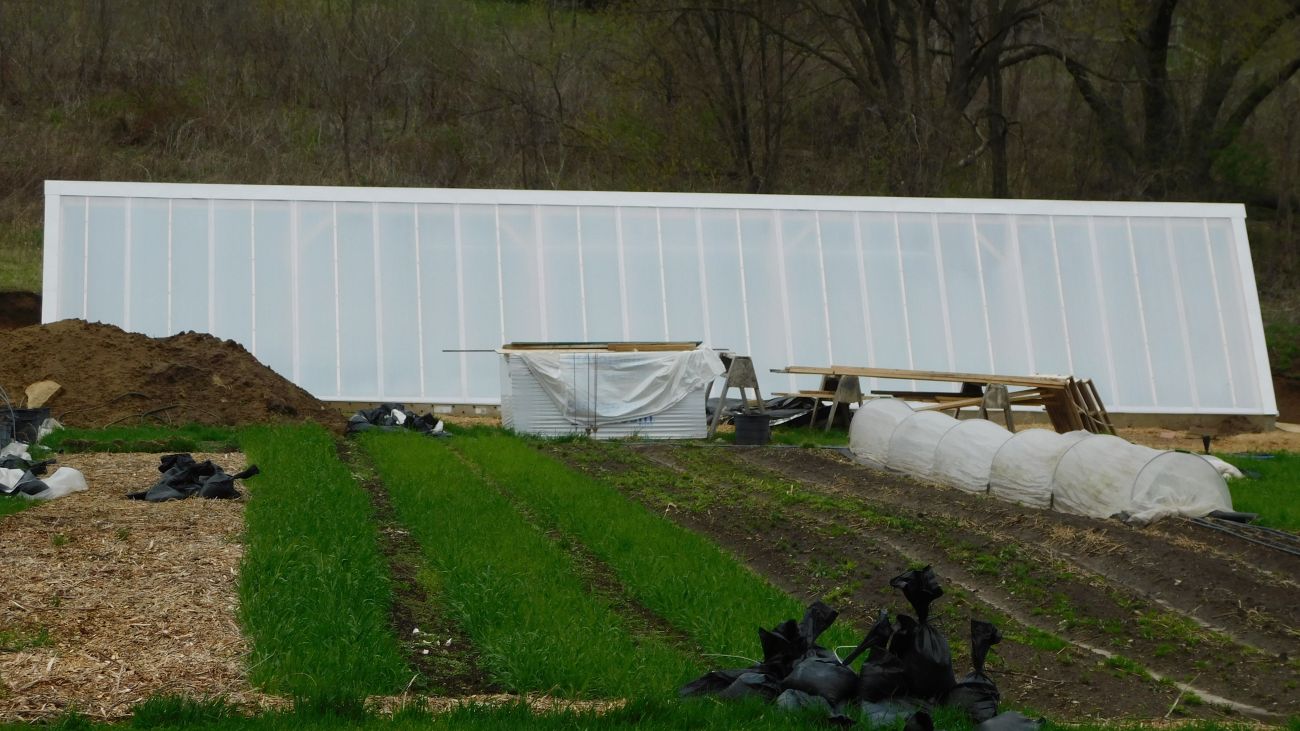
The exterior of Owl Bluff Farm’s Deep Winter Greenhouse. (Photo by Rose Korabek)
Awarded a $25,000 grant in 2024 by RSDP, Owl Bluff Farm built the first DWG in Houston County based on the RSDP’s latest design, which, according to its website, “creates a greenhouse that limits external heat requirements and is sized and priced to allow small- and medium-sized farms to build and operate profitably.”
Getting the grant was a game changer.
“We had no heated growing space before,” Calvo said. “This is our first year and it allows us to grow a bigger variety and volume of produce in the winter.” With that ability, she plans to launch a winter Community Supported Agriculture (CSA), in 2025 or 2026. “We’ll have salad greens, root vegetables, winter squash and other offerings year-round.”
Calvo and her team of one other full-time co-manager and two part-time staff will be able to do “plant starts” much earlier with this heated, indoor space.
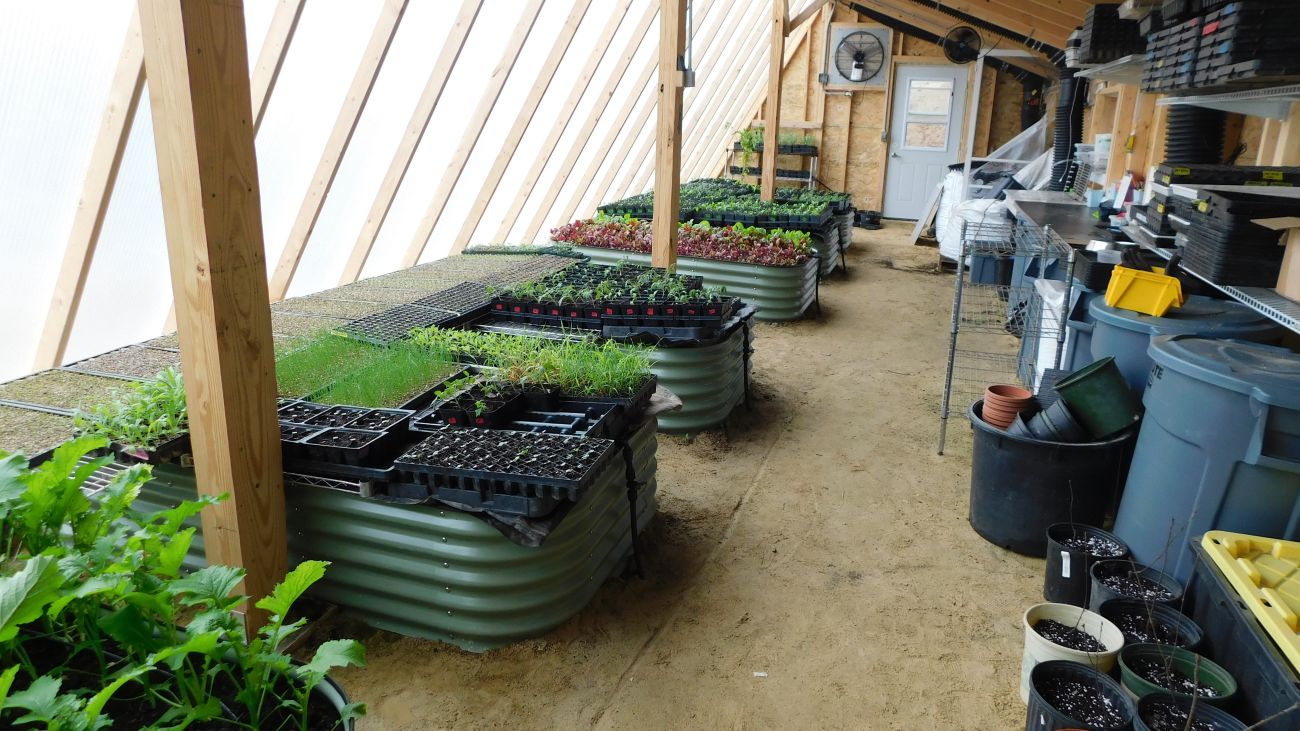
Inside the DWG, new seedlings, established greens, and supplies waiting for more planting. (Photo by Rose Korabek)
Owl Bluff Farm’s vision aligns with these greenhouses pioneered by UMN-Extension. The program, per the RSDP website, says, “Our ultimate goals are to eliminate seasonality in cold climate local food systems, increase the economic viability of the farmers that grow local foods, and to increase the availability of good quality produce year-round.”
“The grant payments are chunked into three parts,” explained Calvo.
“Part of it is for startup, the next portion is when we’ve completed construction, and the final payment is when we hold our first open house field day.”
Owl Barn Farm’s field day is tentatively scheduled for early June; watch its website for more details.
Other grants that help with the building projects
Calvo has plans to continue expanding this fall with two more 100-foot, unheated high tunnels with a grant through the USDA’s Natural Resources Conservation Service.

Farm co-manager, Ari Struver (right) and part time crew member, Erin Dorbin, (left) work in a high tunnel weeding to prepare plants for the farm store. Two more high tunnels will be constructed this fall. (Photo by Rose Korabek)
The farm will also construct a low-tech, narrower caterpillar tunnel with funds provided by the MN Department of Agriculture.
All three will be unheated units. They will be erected on a piece of land that was formerly a hog barn. “We took that down and are cover-cropping it for now,” said Calvo.
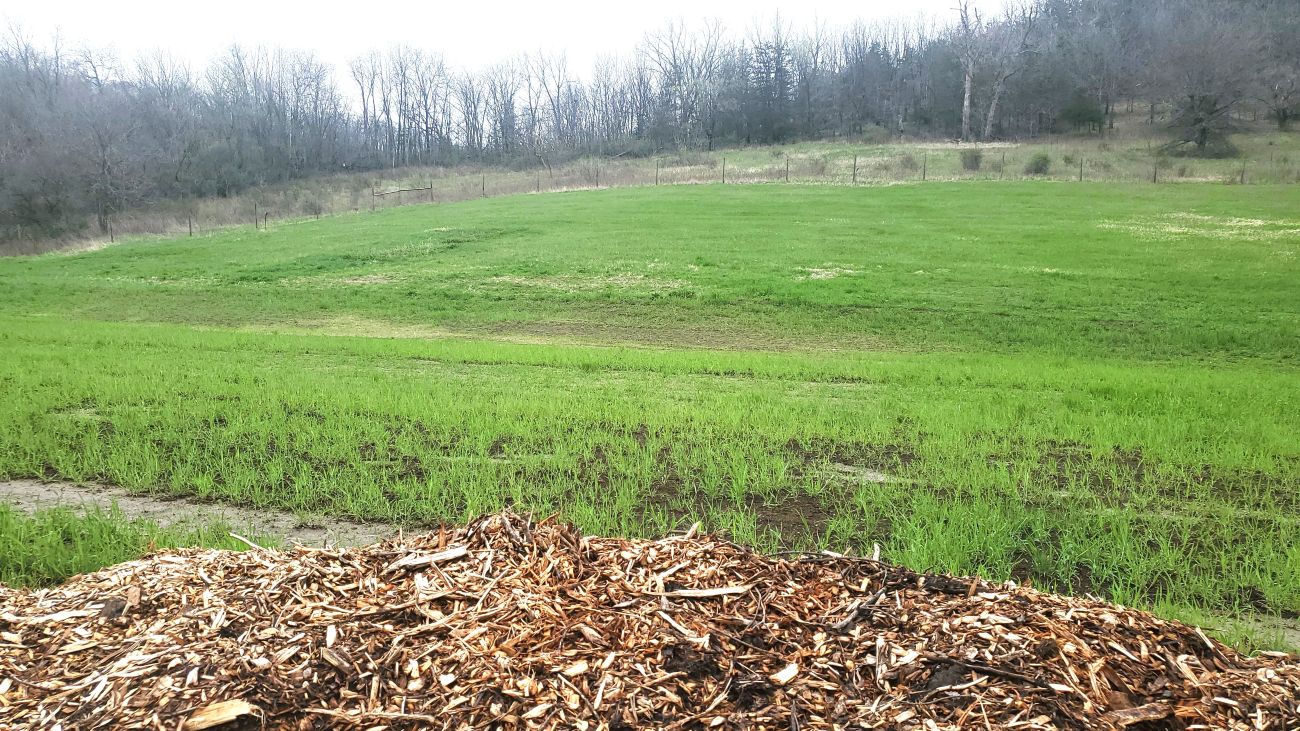
The site of a former hog barn, the land was cleared to build two high tunnels and a caterpillar tunnel in fall of 2025. (Photo by Rose Korabek)
The farm’s team has also increased in size
Calvo grew up in Rochester, Minn., and her husband, Charles, is from Massachusetts. With no farming knowledge, they bought the land and started to create produce for their family, which now includes almost two-year-old Rudy. Carrie grew up in a large city and hopes Rudy will love country living.
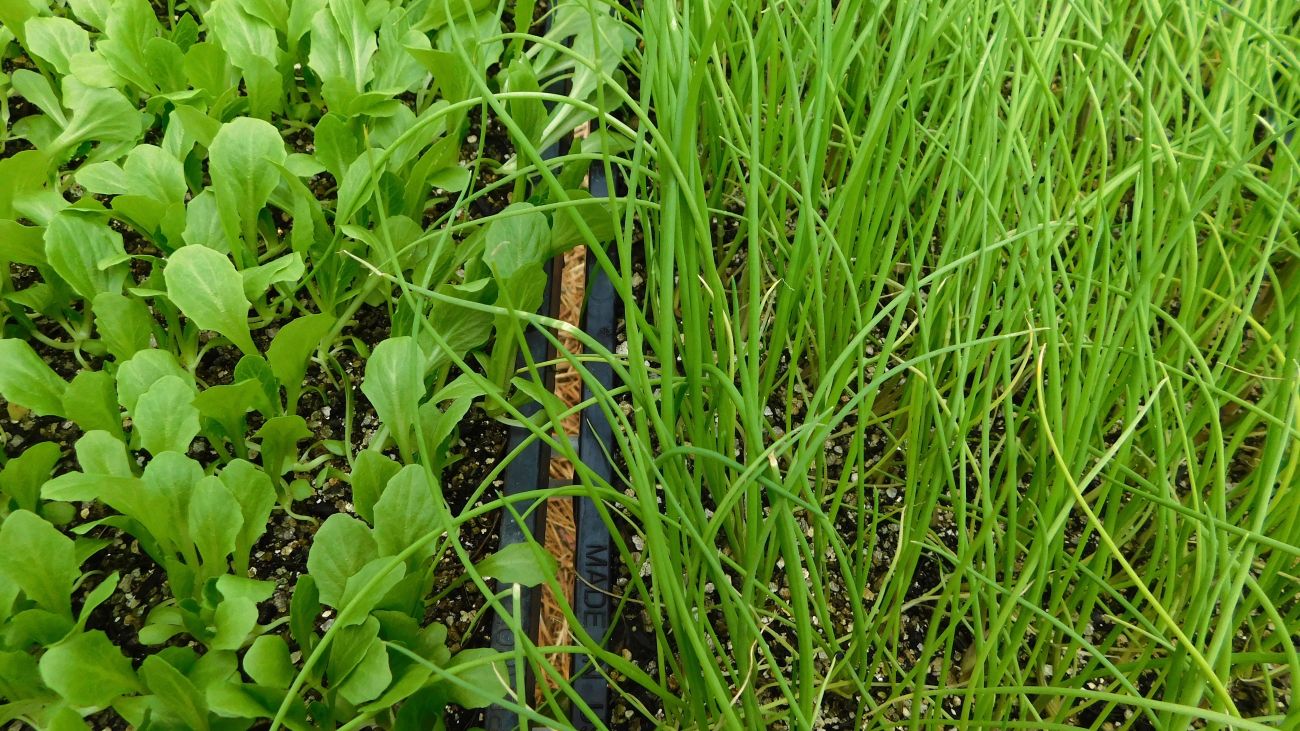
Fresh, organic produce grown year-round in the new DWG. (Photo by Rose Korabek)
From those small roots, the farm has grown into the business it is today. Calvo now co-manages the farm with Ari Struver and has two part-time staff, along with volunteers and seasonal paid crew members.
Still a family affair, Calvo’s mom, Kathy Burch, helps with many aspects of the farm and market stand, delivers orders to Rochester and even builds bat boxes and birdhouses.
“The name Owl Bluff is a tribute,” Carrie said, “to the breathtaking bluffs that surround us, the owls that inhabit them, and my late grandma Carolyn Gramley, an owl lover and devoted gardener.”
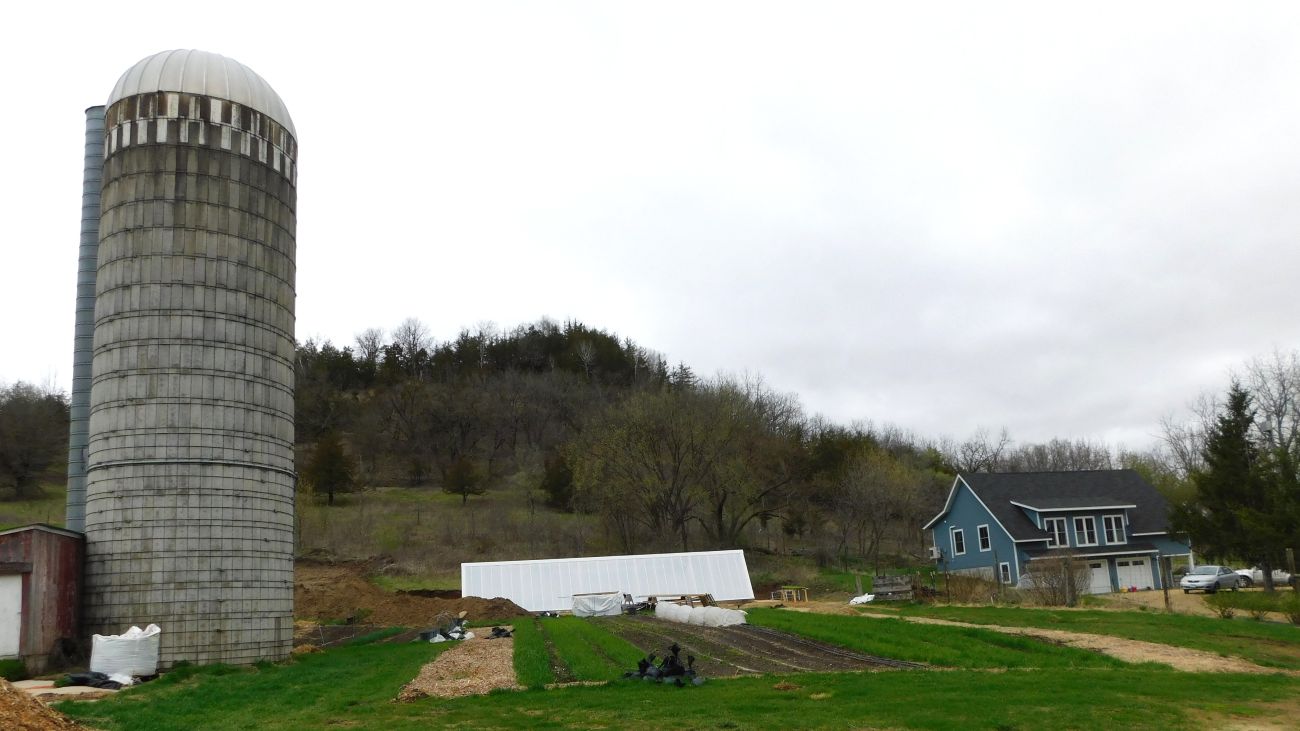
The DWG was built between the house and the silo where it can get the sunlight needed for the solar system to keep the structure just above freezing all winter long. (Photo by Rose Korabek)
Learn more about the farm store, this year’s field day and where Owl Bluff Farm products are sold or used in food preparation, on the Owl Bluff Farm website. For details on the farm’s “volunteer for veggies” program or seasonal crew opportunities, connect here with the farm via email.
…………………

Contributor
Rose Korabek owns Korabek Ink & Edit, LLC based in southeast Minnesota. She is an award-winning storyteller who enjoys exploring culture, cuisine and landscapes. She has been a writer for the Rochester Post Bulletin and the Caledonia Argus. Her hobbies include reading, taking nature hikes, traveling and visiting farmers markets.


